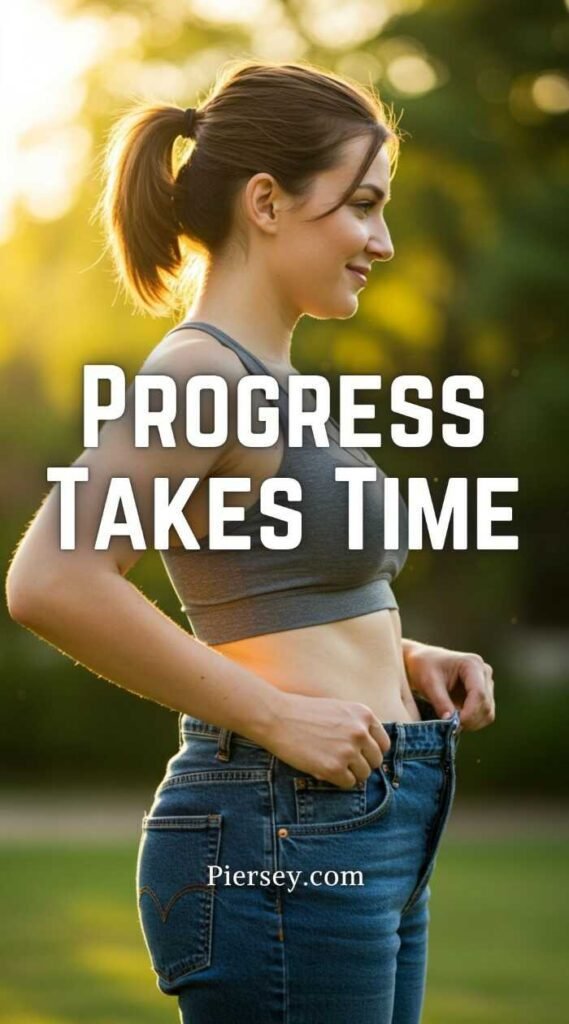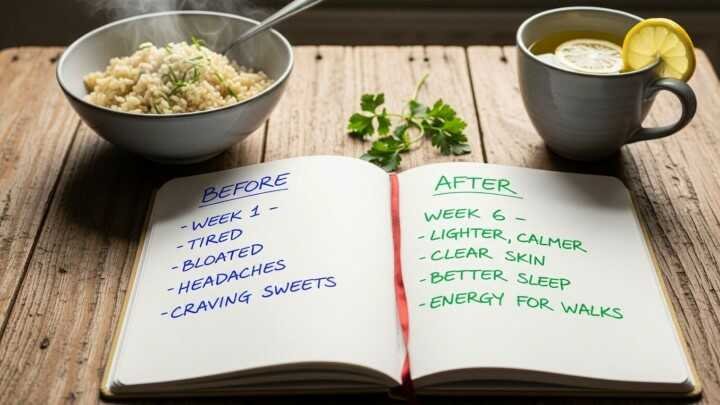Six weeks on the Rice Diet — has it been amazing? Has it been a disaster? Honestly… a bit of both. I’ve lost weight, hit a wall, dragged myself back to the gym after two years, and now have a nightly ritual of waking up to pee. Welcome to my real-life update — the good, the bad, and the rice-heavy.
The biggest surprise? It’s not even the physical side. It’s how mentally different this whole thing feels compared to any diet I’ve ever done. When I was carnivore, the restriction gave me control — or at least the illusion of it. With the Rice Diet, the control comes from simplicity. I don’t have to overthink food. There’s peace in repetition. And honestly, that’s been just as powerful as the weight loss itself.
If you’ve followed me since my 100-pound weight loss plan, you already know I was keto and carnivore for almost a decade before switching to this high-carb, low-fat, plant-based experiment. The Rice Diet is officially the most minimalist thing I’ve ever done — and somehow the most revealing.
👇 If you’d rather watch the video version, it’s right below 👇
The Weight Loss Phase – 19 Pounds Down (Then… Nothing)
The first month was brilliant. Nineteen pounds gone in just over four weeks — and yes, that one extra pound still haunts me because 20 just sounds cleaner. My clothes loosened up, my face looked a bit sharper, and for the first time in years, the scale wasn’t trolling me.
Then came week four. Dead stop. The scale parked itself at 240 pounds and refused to budge. If you’ve ever been there, you know how that feels — the mix of pride and frustration, like your body’s applauding and mocking you at the same time.
But part of me expected it. Nineteen pounds in one month is aggressive. My body was probably thinking, “Mate, you’re not in a Biggest Loser episode, calm down.”
I’m likely at maintenance now. I haven’t changed my food much — still around six cups of rice a day — but I’ve added bananas, lentils, and a bit more juice to fuel training. All small tweaks, but they add up. Either I tighten things up again or add more cardio. Neither sounds thrilling, but progress doesn’t happen by accident.
Energy Levels – Goodbye Afternoon Crash
This has been one of the biggest wins. That brutal mid-afternoon crash — gone. Before, I’d hit that 3 p.m. wall and feel like my soul was buffering. Now, energy’s just… steady. No rollercoasters, no spikes and drops.
And that’s saying something because I still deal with thalassemia, hypothyroidism, and a fatty liver — so fatigue is kind of my permanent house guest. But even with all that, I’m functioning better than I did before. It’s consistent tiredness instead of chaos. Weirdly, that’s progress.
For anyone wondering what fueling around workouts looks like, I break it down in My First Vegan Workout on the Rice Diet — including how I trained after nearly two years off while living mostly on rice, lentils, and fruit.


Back to the Gym – The Return of DOMS
I’ve been back in the gym three times now: one resistance workout, two cardio sessions. I’m taking it easy because the last thing I want is to go too hard, too soon. The soreness though? That came free of charge.
That first workout humbled me. Everything from squats to pushdowns felt like my body was learning a new language. DOMS hit so hard I was walking like I’d just done a marathon in flip-flops. But that soreness? That’s the good pain — proof that my body’s waking back up after all the years of neglect.
And the gym’s already teaching me patience again. You can’t fake progress with weights — your body either shows up or it doesn’t. So for now, I’m keeping things slow, steady, and realistic. I want to keep coming back, not burn out in week two.
Of course, the hunger hit almost instantly. It’s wild how fast your appetite spikes once you start moving again. It’s not “binge” hunger — just a clear signal that your body wants fuel. That probably explains why the scale hasn’t budged, but honestly, I’d rather rebuild my body right than just shrink it.
Sleep – The New Annoying Habit
Sleep has been… complicated. On paper, it’s fine — seven to eight hours a night. But in reality, I wake up at least half a dozen times. It’s not full-on insomnia, just broken sleep. Add in my new nightly bathroom break — which happens without fail around 3 a.m. — and you’ve got a recipe for groggy mornings.
Still, there’s something interesting here. Even with disrupted sleep, my mood during the day’s been calmer. I’m not snapping or feeling foggy like before. I think that’s because the Rice Diet keeps my blood sugar stable, which might be offsetting the sleep debt. But yeah… if I ever figure out how to stop the 3 a.m. pee patrol, I’ll let you know.
Poor sleep also plays a sneaky role in plateaus — cortisol, recovery, cravings — it’s all connected. So fixing that’s my next focus.
Plateaus – Not Failure, Just Feedback
Here’s the biggest mindset shift I’ve had: plateaus aren’t failure. They’re feedback. It’s your body saying, “We need a breather.” Before, I’d see the scale freeze and instantly think I was broken. Now I take it as a sign to reassess — maybe eat a bit cleaner, sleep more, or add movement.
The truth is, plateaus are part of the process. Nobody drops weight in a straight line. The body adapts, holds water, rebuilds muscle, shifts hormones — it’s constantly recalibrating.
If you’re in that same stuck phase, check out Rice Diet Myths Busted — I dig into how carbs get wrongly blamed when your body’s just adjusting.
Fatigue vs Motivation
Motivation’s a myth. At least long-term motivation is. You can’t rely on it daily — it burns out faster than your phone battery. What actually works is structure. My meals, training, and sleep times are almost identical every day. That routine stops me overthinking, and that’s been key.
And the irony? The less I rely on motivation, the easier things get. Progress becomes automatic because the habits take over. I’m not chasing perfection anymore — just trying to win more days than I lose.
What I’d Do Differently
Looking back on these six weeks, there are a few things I’d change. First, I’d have planned recovery days better. I went from barely moving to hitting the gym, and my body was like, “Whoa there, calm down.” If I’d spaced things out more, I probably wouldn’t have crashed as hard.
Second, I’d track my sleep and water more closely. I underestimated how much those impact recovery and weight loss. If you’re following a structured plan like this, don’t ignore the basics — they matter more than macros sometimes.
Lastly, I’d document everything sooner. When you write it down — even in a short log or blog post — you see the trends you’d otherwise miss. It helps you separate emotion from evidence.
Mindset – Learning to Be Okay With Slow
Old me would’ve panicked the moment progress slowed. Now, I’m learning to enjoy the in-between. I’m not chasing fast anymore — I’m chasing sustainable.
And the more I do this, the more I realise this whole process is mental. The body follows the mind. When I stay calm, focused, and realistic, the results come back on their own.
I talked about this in The Truth About Willpower For Losing Weight — how your environment can make or break your progress. That post still holds true now. Because honestly, success isn’t about being super-disciplined. It’s about making your surroundings do half the work for you.


Final Thoughts – The Long Game
Six weeks down. Nineteen pounds lighter. Still learning. Still adjusting. Still eating a ridiculous amount of rice.
But this time, I’m not chasing perfection. I’m chasing peace — with food, with my body, and with the process itself. The Rice Diet isn’t glamorous. It’s not Insta-worthy. But it’s real, it’s cheap, and it works.
So if you’re six weeks into your own journey and feeling stuck, remember this: you’re not failing — you’re just recalibrating. Weight loss isn’t linear. The wins hide in the consistency, not the speed.
I’ll keep sharing everything — the tweaks, the frustrations, and hopefully the next drop on the scale soon. Until then… it’s me, my rice, and my 3 a.m. bathroom break.





